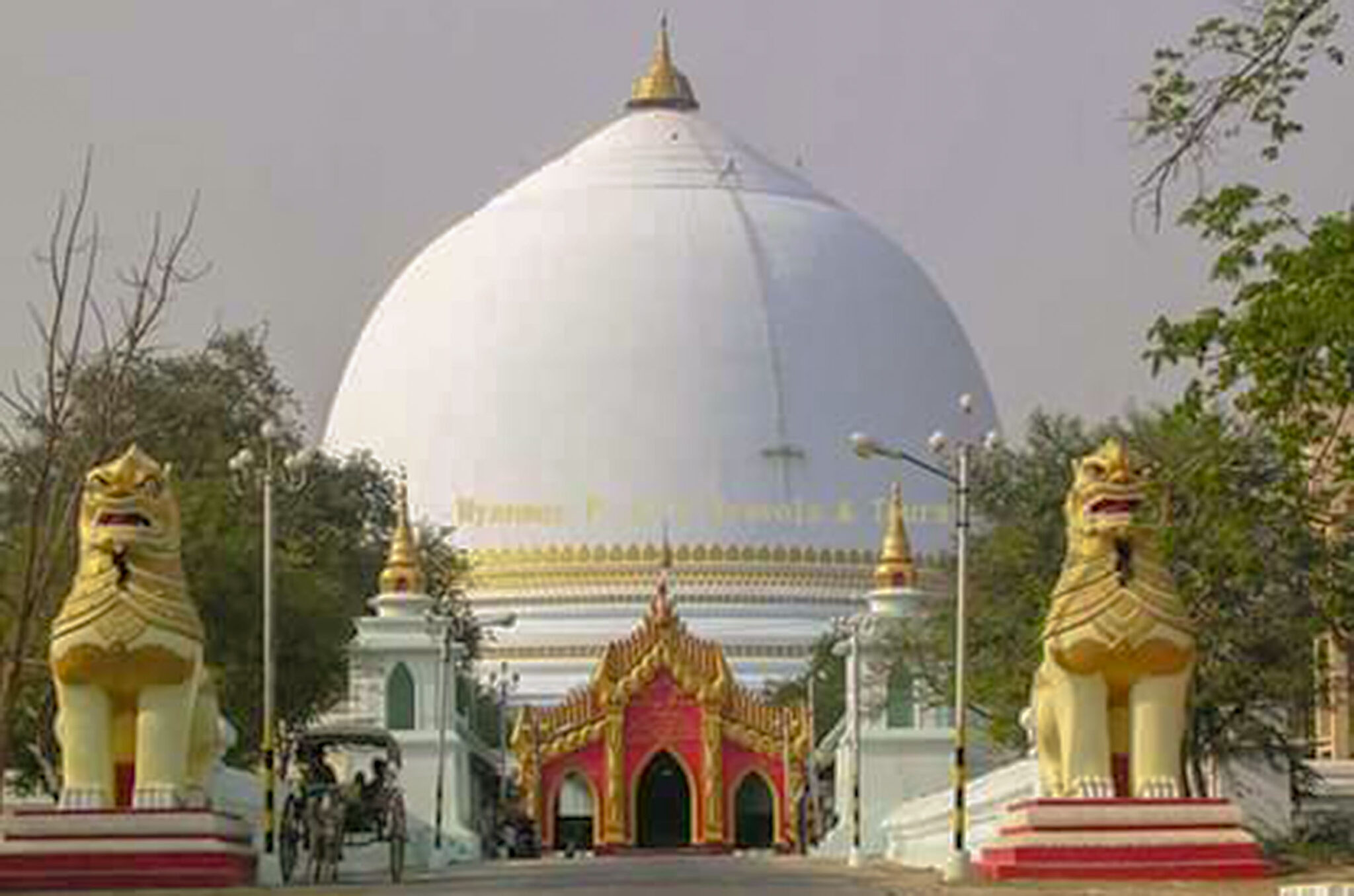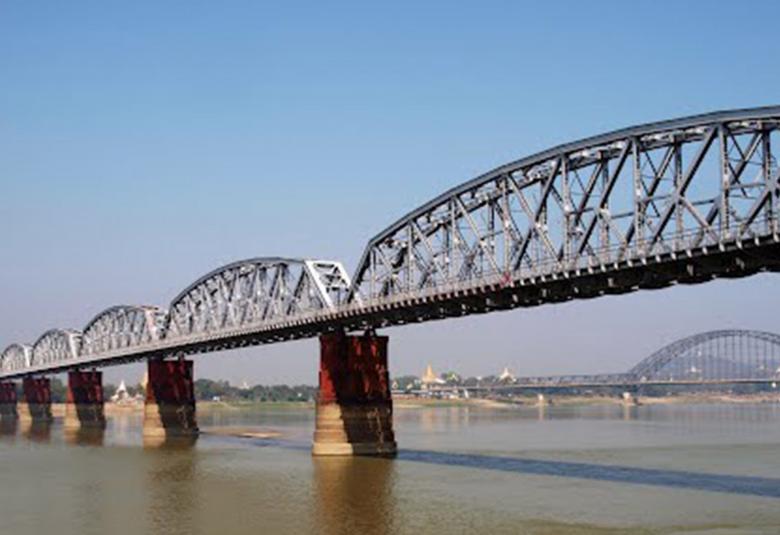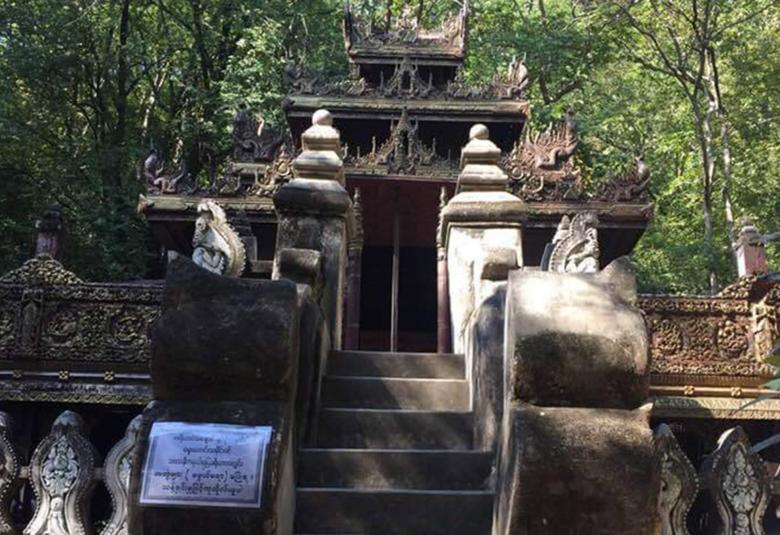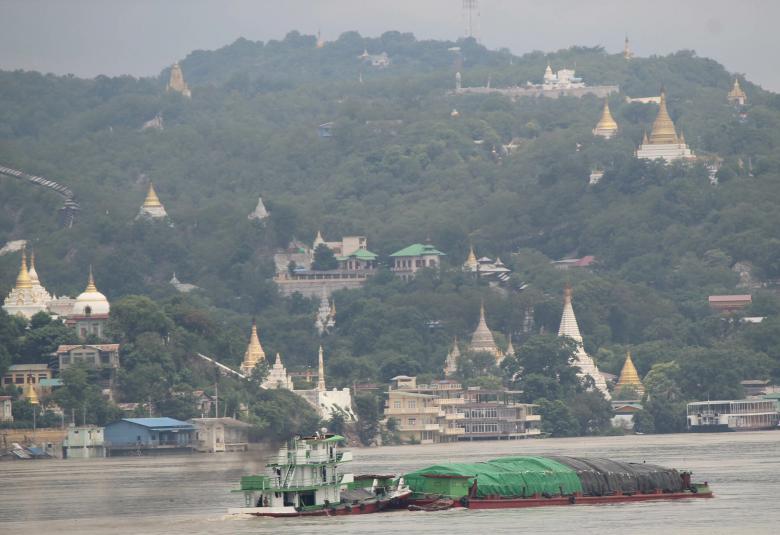By Maung Tha (Arcaheology)
Among cities in Konbaung era, Sagaing City which was established in 1315 AD turns 705 years now.
Plentiful of cultural heritages remain in Sagaing. Among them, a large number of pagodas painted with lime along Sagaing Hill are symbols of Sagaing.
Sagaing in history
Sagaing located at the foot of Minwun mountain range, west of Ayeyawady River, was famous as Zeyapura. Ayeyawady River streams beside Sagaing as a shape of hugging the city.
The Glass Palace History mentioned that the queen of Tagaung King Thadoe Maharaja gave birth to two blind sons in 40 Sasana era. They were named Maha Sambhava and Cula Sambhava. The king ordered to kill those sons but the queen hid them till their aged at 19 years old and then set them adrift into the Ayeyawady River. The raft they rode hooked up with a branch of Sit tree in an area. From then onward, the area was named Sagaing.
Zabudipa Usaung treatise edited by U Pe Maung Tin and J. S. Furnivall mentioned “Sagaing area is located east and south to Ayeyawady River, west to Sauktaw Inhtwet Creek and north to Magyisi.”
Saw Ywan, son of Taseeshin Thihathu who was the youngest of three Shan brothers, established Sagaing in 677 to rule the northern part of the country. He took the title of Thiri Athinkaya.
Various history treatises mentioned the residential term of Athinkhaya Saw Ywan before throne but U Kala, Twinthin, Glass Palace and Zartatawpon treatises mentioned eight years for ruling period.
Seven kings reigned for Sagaing for more than 50 years—Athinkhaya Saw Ywan for eight years, Tayaphya for 14 years, Shwetaungtet for three years, Kyaw Swa for 10 years, Hsinbyushin Nawrahta Minye for seven months, Hsinbyushin Tayaphyange for three years and Min Pyauk for 13 years.
Current Sagaing
Sagaing takes a position on 12.612 square miles of land with 300 feet high of above sea level and Sagaing Township on 485.16 square miles of land. The highest part of the city is 1,373 feet high at Shwemyintin Hill.
Sagaing Township is sharing border with Ayeyawady River, Madaya, Patheingyi and Amarapura townships in the east, Mu River and Myinmu Township in the west, Ayeyawady River, TadaU and Ngazun townships in the south and Wetlet Township in the north.
At present, Sagaing Township formed with two towns as Sagaing and Hsataung, 34 wards and 177 villages from 76 village-tracts. According to the data in September 2018, a total of 283,332 people resided in the township.
Based on statistics in September 2018, a total of 776 pagodas, 1,378 stupas, 1,311 monasteries and 490 nunneries are located in Sagaing Township. Likewise, the township is home to 8,149 monks, 6,379 novices and 7,865 nuns.
The Department of Archaeology and National Museum preserves 10 buildings including Asaykhan Fort, iron smelting furnace, Ariyawuntha corner and Yokesone monastery, Mingun bell, Myatheintan Pagoda, Pondaw Ceti, Pahtodawgyi, two large lion statues, Settawya Pagoda, Kyetdaunt Lake and LaungUmaw Pitakat chamber in Ywathitgyi as ancient buildings in Sagaing.
Historical buildings in Mingun area
Mingun, a famous tourist destination in Myanmar, is 12 miles north of Sagaing, having access to Mandalay via motor road as well as Ayeyawady River.
King Badon who established Amarapura Royal Palace started construction of Pahtodawgyi Temple in 1152 Myanmar Era but could not finish it. The folded paper from the golden treasury proved Pahtodawgyi was purposed to build the one with 293 elbows in diameter and 352 elbows in height. But, veteran historian Dr Than Tun wrote that construction of the Pahtodawgyi reaching 160 feet in height collapsed. King Badon built the 15 feet high replica of Pahtodawgyi in 1152 ME.
King Badon built two large lion statues with 95 feet each in height in the east of Pahtodawgyi in 1155 ME. The northern lion statue collapsed in 1200 ME and the southern one was also damaged by the earthquake in 1318 ME.
Mingun bronze bell weighing 90.52 tons or 55,555 viss is the world’s largest one which can be rung across the world. King Badon (1782-1813 AD), the fifth king in Konbaung dynasty, cast the bronze bell on 29 April 1808 AD.
Prince Sagaing built Myatheintan Pagoda in 1163 ME and completed it in 1169 ME. The pagoda was named as Myatheintan due to donation of an emerald stone worth K100,000 by Prince Sagaing for construction of the pagoda.
Construction of Settawya Pagoda in Sagaing, a brick tier-roofed building, was contributed cash by Thiri Thumalla Nanda Devi, spouse of Prince Momeik.
Historical buildings in Sagaing
Htupayon Pagoda, built by Inwa King Narapatigyi (1443-1469 AD) is located in Poetan Ward of Sagaing. In 1447 AD, people paid visits to the umbrella hoisting ceremony of Htupayon Pagoda passing through the temporary bridge. A strong earthquake destroyed the bridge in 1838. King Bagan rebuilt the bridge in 1849 but he could not finish it.
An iron furnace built at the western foot of ShwetawUmaw Hill and Asaykhan Fort on the bank of Ayeyawady River can be seen as historical heritages of Konbaung era as well as Inwa Bridge built in 1934 across Ayeyawady River.
Kaunghmutaw Stupa built in Nyaungyan era is located six miles northwest of Sagaing. According to Twinthin New History, King Thalun, the third king of Nyaungyan Dynasty, built Kaunghmutaw Stupa in design of Htupayon Pagoda from Ceylon Island, near Phettinhteik Lake of Sagaing. The stupas called Raza Manicula was enshrined on 4 September 1636.
The dome of Kaunghmutaw Stupa with 274 metres in diameter and 46 metres in height was built with three terraces flanked by 812 five feet high stone posts.
A total of 10,186,522 bricks, 164,555 baskets of plaster and 22,492 baskets of concrete were used in building the stupa. King Pintale (1648-1661 AD), son of King Thalun, hoisted the umbrella atop the stupa on 8 April 1649.
The stone inscription posted on the platform of the stupa mentions the history of stupa, donated lands for the stupa and list of servants for serving the stupa.
Zeyapura
Inwa King Thadoe Minphya (1364-1368 AD) moved his royal palace to Inwa from Sagaing. King Naungdawgyi of Konbaung era reigned over the country from Sagaing from 1760 to 1764 AD. After King Naungdawgyi had passed away, the royal palace was moved to Inwa again.
Sagaing, being a royal palace for more than 50 years, has been a tourist destination for many years.
Since 705 years, Zeyapura Sagaing still maintains its significant symbols such as stupas and temples, fort and industries, stone inscriptions, holly corners on Sagaing Hill and cultural buildings. As such, Sagaing is famous a cultural city of Myanmar among local and foreign travellers till today.
(Translated by Than Tun Aung)






